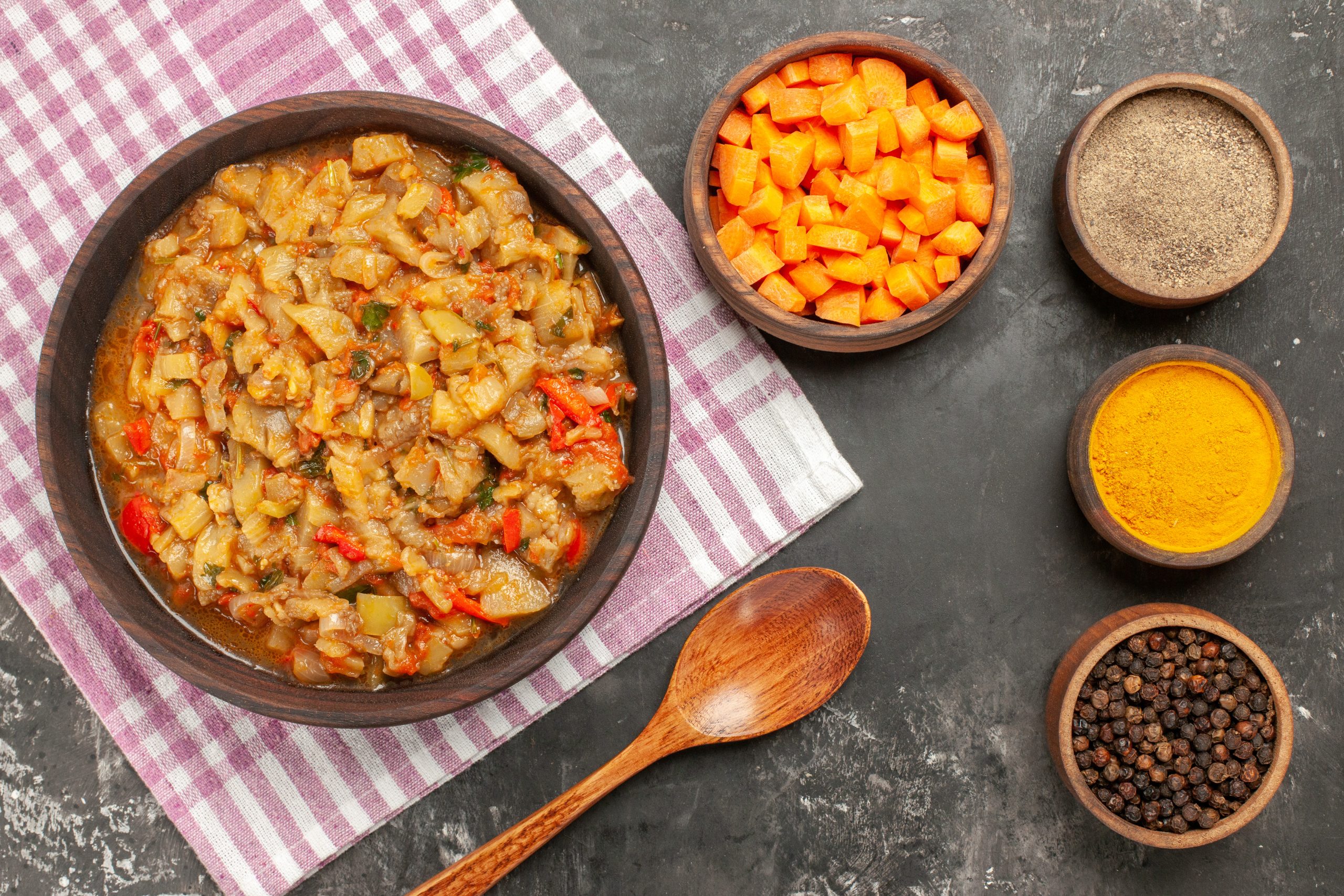
As the days grow shorter and the temperatures begin their steady descent, there’s nothing quite as comforting as coming home to a steaming bowl of savory stew. When winter chill creeps under your doors and through the cracks of your windows, a hearty one-pot meal can make all the difference. Not only are stews incredibly satisfying and delicious, but they’re also economical, easy to prepare, and can often be stretched over several meals. In this blog post, we’ll explore the magic of one-pot winter stews—covering everything from their culinary history to tips on preparation, as well as recipes and ideas for making the most of them. Whether you’re new to cooking or an experienced home chef looking for fresh inspiration, there’s something here to warm both your stomach and your heart.
A Brief History of Stews
Stews have been around for thousands of years, with evidence of their existence going back to ancient civilizations across the globe. By definition, a stew is any combination of meat (or protein) and vegetables that’s slowly simmered in a liquid base—typically water, broth, or wine—until the ingredients meld into a richly flavored dish. Early stews were cooked in clay pots, animal hides, and even troughs constructed from natural materials. Over time, as cooking equipment evolved, the one-pot meal became an essential part of many cultures’ cuisines. Examples range from French boeuf bourguignon to Hungarian goulash, from Moroccan tagine to Japanese nikujaga. Each of these dishes stands as a testament to the universal appeal of a simmered, one-pot meal.
Winter stews occupy a special place in this pantheon because they’re hearty, robust, and particularly suited for cold-weather ingredients—root vegetables, tough cuts of meat that need extra cooking time, and high-calorie staples that provide warmth and energy. Today, we continue to enjoy the warmth and comfort of stews just as our ancestors did, but we have the added convenience of modern stovetops, ovens, slow cookers, and electric pressure cookers.
Why One-Pot Winter Stews Are So Appealing
- Ease of Preparation: One-pot cooking is famously uncomplicated. You generally don’t need to worry about cooking multiple elements of the meal in separate pans or juggling different cooking times. Instead, you can focus on building layers of flavor in a single vessel, which in turn means less cleanup afterward.
- Economical: Stews are a fantastic way to use up leftover vegetables or to make the most of cheaper cuts of meat. Ingredients like carrots, potatoes, onions, and celery are typically quite affordable, and tougher cuts of beef, pork, or lamb become melt-in-your-mouth tender when simmered over a long period.
- Versatile: Winter stews aren’t confined to meat-only preparations. There are countless vegetarian and vegan options that are every bit as satisfying—full of protein-packed beans, lentils, and hearty vegetables like squash or sweet potatoes.
- Nutrient-Rich: Slow simmering allows vegetables to retain many of their nutrients, and if you use a homemade or low-sodium broth, you can control the levels of salt and fat that go into your dish. Stews that incorporate dark leafy greens, beans, and whole grains are a nutritional powerhouse.
- Make-Ahead Potential: Most stews only get better with time. The flavors continue to meld and deepen as they sit in the refrigerator, so making a big pot on the weekend means you’ll have lunches or dinners ready for the next few days.
Essential Tips for Cooking Winter Stews
1. Brown Your Protein (If Using): Whether you’re using beef, chicken, or any other type of meat, taking a few minutes to brown it before adding the liquid is essential. Browning concentrates the flavor and adds complexity to the dish. Be sure to pat your meat dry before putting it into the hot pot, and don’t overcrowd the pan—this allows each piece to caramelize properly.
2. Layer Your Flavors: Start by sautéing your aromatics—such as onions, garlic, carrots, and celery—before adding the liquid. This helps develop a deep, savory base for your stew. If you’re using spices or dried herbs, throw them in at this stage too. The heat brings out their oils and maximizes their flavor.
3. Deglaze the Pot: Once you’ve browned your meat and sautéed your aromatics, you’ll likely have a layer of browned bits (called fond) at the bottom of your pot. Pour in a splash of wine, broth, or even water, and scrape those flavorful bits into the mixture. This is one of the best ways to enrich the flavor of your stew.
4. Choose the Right Cooking Method: While stovetop simmering is a classic approach, slow cookers and pressure cookers can also produce excellent results. A slow cooker is perfect for days when you’ll be out of the house; just toss everything in, set it on low, and come back to dinner. Pressure cookers help cut down on time by creating a high-pressure environment that speeds up the cooking process.
5. Don’t Forget to Season Gradually: Adding salt in stages throughout cooking helps build a more balanced flavor. Taste as you go along and adjust as needed, especially as the stew reduces and flavors concentrate.
6. Thicken to Perfection: Some stews require thickening agents like flour or cornstarch. Alternatively, you can blend a small portion of the stew’s vegetables or add mashed potatoes or pureed beans to give the dish extra body.
7. Rest Your Stew: If possible, let your stew rest for at least 10–15 minutes after cooking before serving. This helps redistribute the juices and allows the flavors to harmonize. In fact, many stews taste even better the next day once they’ve had time to “marry” in the refrigerator.
Recipe Ideas and Inspirations
Below are a few hearty one-pot stew ideas to keep you warm during winter’s coldest days. Each can be adapted to your personal taste or dietary preferences.
1. Classic Beef and Vegetable Stew
Key Ingredients: Beef chuck or stew meat, onions, carrots, potatoes, peas, beef broth, tomato paste, red wine (optional), thyme, bay leaf
- Brown the Beef: Begin by heating a tablespoon or two of oil in a heavy-bottomed pot or Dutch oven. Season the beef with salt and pepper, then brown it in batches to avoid overcrowding. Remove and set aside.
- Sauté Aromatics: In the same pot, add diced onions, carrots, and celery. Cook until the onions become translucent, about 5–7 minutes. Toss in minced garlic, thyme, and a bay leaf, stirring for another minute.
- Deglaze: Pour in a splash of red wine or beef broth to deglaze. Scrape up the fond for extra flavor.
- Add Liquid and Simmer: Return the beef to the pot along with beef broth (and a spoonful of tomato paste if desired). Bring the mixture to a gentle simmer. Let it cook for at least an hour (or up to two hours) until the beef is fork-tender.
- Add Vegetables: Add chopped potatoes, carrots, and any other vegetables you like—peas, green beans, or even mushrooms. Continue cooking until the vegetables are tender.
- Thicken and Adjust: If you prefer a thicker stew, whisk a spoonful of flour into cold water and stir it into the stew. Alternatively, remove a cup of stew liquid and whisk in cornstarch. Season to taste with salt and pepper.
- Serve: Ladle into bowls and enjoy with crusty bread.
This classic stew is the perfect antidote to a chilly day, delivering deep and comforting flavors that will make your kitchen smell like home.
2. Chicken and Barley Stew
Key Ingredients: Chicken thighs (skinless, boneless), barley, onions, carrots, celery, chicken broth, rosemary, thyme
- Brown the Chicken: Using a little olive oil, brown the chicken thighs on both sides in a large pot. Remove and set aside.
- Sauté Vegetables: Add chopped onions, carrots, and celery, cooking until onions soften. Stir in minced garlic and herbs (rosemary and thyme work wonderfully here).
- Add Barley and Broth: Pour in the chicken broth along with the barley. Mix in any additional herbs or spices you prefer (such as bay leaves or a dash of paprika).
- Simmer: Return the chicken to the pot and let everything simmer for about 30–40 minutes, or until the barley is tender and the chicken is cooked through. Skim any excess fat that rises to the top.
- Shred the Chicken: Remove the chicken thighs, shred them using two forks, and return the meat to the pot.
- Taste and Adjust: Season the stew with salt and pepper. If the stew has thickened too much, simply add more broth or water.
- Finish: For an added nutritional boost, consider stirring in a handful of chopped spinach or kale at the very end.
This stew is hearty, high in fiber (thanks to the barley), and makes a perfect weeknight meal when you want something nourishing but not too heavy.
3. Vegetarian Lentil and Sweet Potato Stew
Key Ingredients: Lentils (green or brown), sweet potatoes, onions, garlic, vegetable broth, tomatoes (canned or fresh), cumin, paprika, spinach or kale
- Sauté Aromatics: Heat a tablespoon of oil in a large pot, then add chopped onions. Cook until they start to caramelize, about 5–8 minutes. Add minced garlic, cumin, and paprika; stir for about 30 seconds.
- Deglaze: Pour in vegetable broth (or water) and scrape up any browned bits from the pot.
- Add Lentils and Sweet Potatoes: Rinse the lentils, then add them to the pot along with cubed sweet potatoes. Stir in canned or fresh tomatoes, and bring the mixture to a boil.
- Simmer: Reduce heat to a gentle simmer. Cook for about 20–25 minutes, or until the lentils are tender but still hold their shape.
- Add Greens: Stir in a few handfuls of spinach or kale. Let it wilt for about 2–3 minutes.
- Adjust Seasoning: Taste and add salt, pepper, or extra spices if needed. If you want a creamier texture, blend a cup of the stew and return it to the pot.
- Serve: This stew pairs beautifully with a drizzle of yogurt (or a vegan alternative) and a sprinkle of fresh herbs like cilantro or parsley.
Packed with plant-based protein, fiber, and vitamins, this stew offers all the warmth and nourishment you need on a cold winter’s day.
4. Moroccan Chickpea Stew
Key Ingredients: Chickpeas, onions, garlic, ginger, tomatoes, vegetable or chicken broth, spices (cumin, coriander, turmeric, cinnamon), dried fruit (apricots or raisins), carrots, bell peppers
- Build Your Flavor Base: In a large pot, sauté onions in olive oil until translucent. Add minced garlic and ginger, then stir in a teaspoon or two each of cumin, coriander, turmeric, and a pinch of cinnamon.
- Add Liquid: Deglaze with a splash of water or broth. Add carrots, bell peppers, diced tomatoes, and your broth of choice.
- Simmer: Let the mixture cook for about 10–15 minutes. Stir in chickpeas (canned is fine, but feel free to use cooked dried chickpeas if you prefer).
- Include Dried Fruit: Toss in chopped dried apricots or a small handful of raisins. These will add subtle sweetness that complements the spices.
- Thicken and Flavor: Simmer until the carrots are tender and the flavors have melded together. Season with salt and pepper. If you want a thicker consistency, mash a small portion of the stew with a fork or potato masher.
- Finish: Garnish with fresh cilantro or parsley and serve with couscous, quinoa, or flatbread.
This Moroccan-inspired stew is a colorful, fragrant dish that teems with layers of sweet and savory flavors—perfect for brightening up a dreary winter afternoon.
5. Pork and White Bean Stew with Rosemary
Key Ingredients: Pork shoulder, white beans (cannellini or navy), onions, garlic, celery, carrots, rosemary, chicken or vegetable broth
- Prep the Pork: Cut pork shoulder into bite-sized chunks. Pat them dry, then season with salt and pepper.
- Brown the Pork: In a heavy pot, heat a tablespoon of oil and brown the pork in batches. Remove the pork and set aside.
- Sauté Aromatics: Add diced onions, celery, and carrots. Cook until the onions soften and the vegetables start to caramelize. Stir in minced garlic and fresh rosemary leaves (or dried if you don’t have fresh).
- Deglaze and Add Beans: Pour in a bit of broth to loosen any browned bits. Return the pork to the pot, then add white beans (rinsed and drained if using canned) along with enough broth to cover everything.
- Simmer: Let the stew simmer for about an hour or until the pork is tender. If using dried beans, make sure they’re already soaked and partially cooked before adding to the stew, or allow extra time for them to soften.
- Season and Thicken: Taste the stew and adjust the seasoning. You can add a splash of vinegar or lemon juice to brighten up the flavor if needed. To thicken, smash some of the beans against the side of the pot.
- Serve: Top with chopped fresh parsley or additional rosemary. Serve with crusty bread for soaking up every drop.
The combination of tender pork, creamy white beans, and fragrant rosemary is an unforgettable winter comfort meal—simple to prepare and perfect for a cozy night in.
Serving and Storing Your Stews
- Serving Suggestions: A crusty loaf of bread or a batch of cornbread is a classic accompaniment to soak up all the stew’s flavorful juices. Other sides might include mashed potatoes, polenta, or rice—anything that can help capture all that delicious broth. A crisp green salad can provide a refreshing contrast, balancing the stew’s richness.
- Leftovers and Freezing: Store leftover stew in an airtight container in the refrigerator for up to four days. Many stews, especially beef and tomato-based ones, taste even better the next day. If you’ve made a large batch, freeze individual portions for up to three months. Defrost in the refrigerator overnight and then reheat on the stovetop or in the microwave.
- Repurposing: If you find yourself with extra stew and want a different spin, use it as a base for pot pies or serve it over egg noodles, couscous, or risotto. You can also thicken leftover stew with cornstarch or flour, wrap it in puff pastry, and bake until golden for an inventive hand pie.
Tips for Making Your Stew Even More Special
- Add a Splash of Acid: A tablespoon of vinegar or a squeeze of lemon at the end can brighten up the entire dish, counteracting any heaviness or richness.
- Use Fresh Herbs: While dried herbs are perfectly fine for the long simmer, adding a handful of chopped fresh herbs like parsley, dill, or cilantro just before serving can bring a burst of color and a hint of freshness.
- Spice It Up: If you enjoy heat, feel free to include chili flakes, cayenne pepper, or diced jalapeños in your stew. Just remember to add them gradually, as you can always put in more but can’t easily take it out.
- Experiment with Broths: Don’t be afraid to use different types of broths—beef, chicken, vegetable, or even mushroom stock for a richer, more complex flavor.
- Use Leftover Wine: If you’ve got an open bottle of red or white wine that’s a day or two old, it can add depth to your stew. Red wine pairs beautifully with beef, while white wine is fantastic with chicken or pork.
- Garnish Creatively: Beyond herbs, consider topping your stew with toasted nuts, crumbled cheese (like feta or goat cheese), or even a spoonful of sour cream or Greek yogurt.
Closing Thoughts
Winter is a time of introspection, slowing down, and seeking comfort. There’s no better companion on a frosty day than a one-pot stew that’s bubbling away on your stove or simmering in your slow cooker. The beauty of stews lies not only in their big, bold flavors but also in their ability to bring people together around the dinner table. The simplicity of the concept—meat or vegetables, broth, and time—allows you to focus on quality ingredients and the cozy atmosphere of your kitchen.
Whether you’re drawn to the classic beef stew redolent with red wine and herbs, a rustic chicken and barley creation, or a plant-based lentil and sweet potato option, you’ll find that a good stew is more than just a meal. It’s an experience, a ritual that calls for a warm blanket, soft music, and the delightful anticipation of savoring spoonful after spoonful of hearty comfort.
This winter, embrace the one-pot lifestyle. Stock up on your favorite seasonal ingredients—winter squash, carrots, parsnips, potatoes, hearty greens—and experiment with the recipes we’ve covered here. With a little prep, a dash of creativity, and a pinch of patience, you’ll be rewarded with aromatic meals that can nourish you for days. Stews are more than just a way to keep warm; they’re a celebration of the season and a testament to the timeless comfort of a homemade meal.
So grab your biggest pot, gather your loved ones, and start cooking up some winter magic. With hearty one-pot stews on the menu, you’ll stay warm, well-fed, and perfectly content until spring starts to peek around the corner. After all, what better way to ward off the frosty weather than with a fragrant, simmering stew that fills your home (and your heart) with warmth? Enjoy, and stay cozy!









